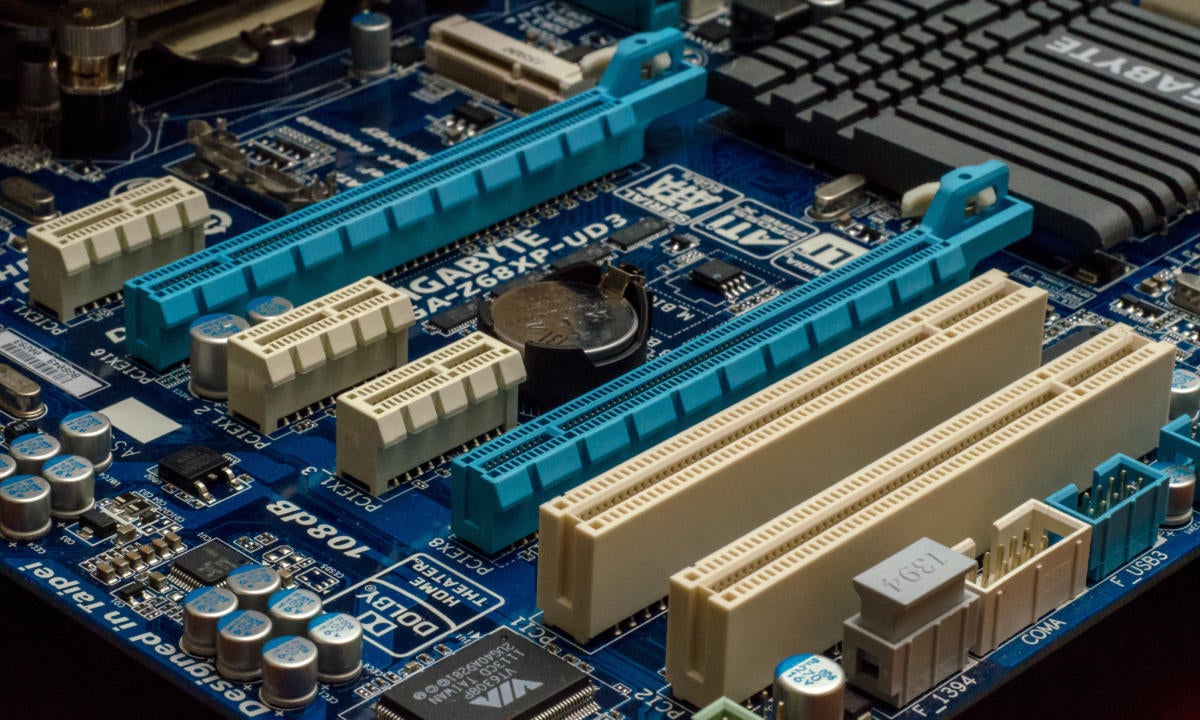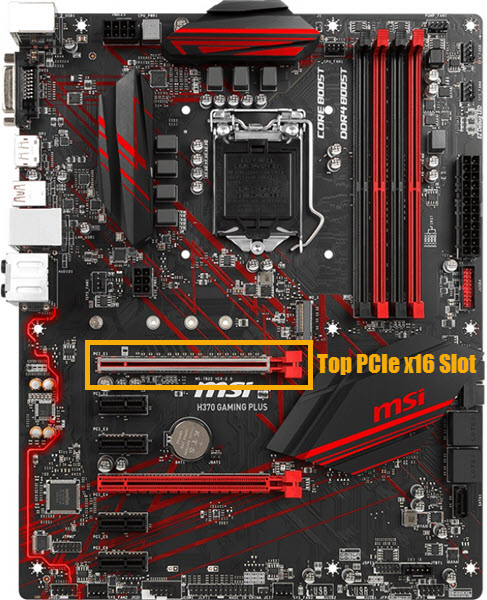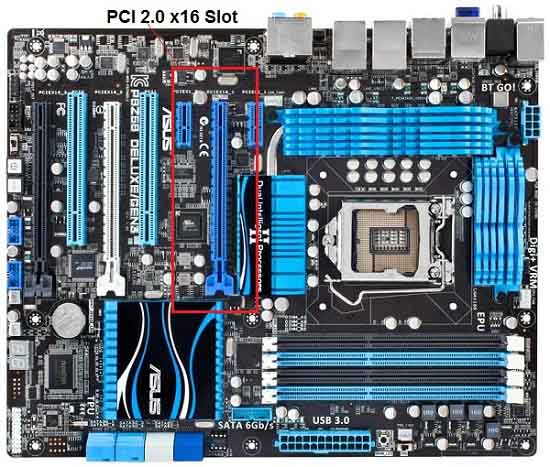X16 Graphics Slot Mean
Plug the GeForce RTX 2060 graphics card into the Primary PCI Express x16 slot on your motherboard. This is often the slot closest to the CPU but may be the second or third slot. Look for the slot labeled ×16. It will likely be the only PCI Express slot with a retention lever on the end of the slot. Because Ryzen 3000 “only” can support a single-slot x16 PCIe 4.0, you have to choose whether to put your x16 PCIe 4.0 graphics card or your x16 PCIe 4.0 SSD in that slot. Why would the graphics card work fine on the second PCIe x16 slot, but not on the first PCIe x16 slot?What is the difference between these two PCIe x16 slots in Precision T3500? To illustrate this: when I say first PCIe x16 slot I mean the blue one, and the second PCIe x16 slot. Im building my first ever PC, and as I was looking through the motherboards, Ive noticed quite a lot of them state they have a PCIe 2.0 x16 slot, and then they have a PCIe 2.0 x16 slot. I was wondering if my PCI express x16 Slot on my motherboard is a PCI Express 2.0 slot Im looking into buying a PCI Express 2.0 graphic card for my board but im not sure if it will be compatible. Any Help would be greatful I have a Intel DG41RQ motherboard.
One of the features found on the most recent CPUs, chipsets, motherboards, and video cards is the PCI Express 3.0 connection. Nevertheless, does it offer an actual performance improvement over the PCI Express 2.0 standard?
PCI Express 3.0 connection was specified in 2010, with a maximum theoretical transfer rate per lane of almost 1 GiB/s (actually, 984.6 MiB/s), twice the rate of the PCI Express 2.0 standard that offers 500 GiB/s per lane. Thus, a PCI Express 2.0 x16 slot offers a maximum theoretical bandwidth of 8 GiB/s, while a PCI Express 3.0 x16 slot reaches 16 GiB/s.
Base Clock Speed: PCIe 3.0 = 8.0GHz, PCIe 2.0 = 5.0GHz, PCIe 1.1 = 2.5GHz
Data Rate: PCIe 3.0 = 1000MB/s, PCIe 2.0 = 500MB/s, PCIe 1.1 = 250MB/s
Total Bandwidth: (x16 link): PCIe 3.0 = 32GB/s, PCIe 2.0 = 16GB/s, PCIe 1.1 = 8GB/s
Data Transfer Rate: PCIe 3.0 = 8.0GT/s, PCIe 2.0= 5.0GT/s, PCIe 1.1 = 2.5GT/s
PCIe 3.0 features a number of interface architecture improvements, but communicates at the same interface speeds used in PCIe 2.0. PCIe 3.0 achieves twice the communication speeds of PCIe 2.0 through various architecture and protocol management improvements.
Regarding to video cards, all current models are compatible with PCI Express 3.0; the first NVIDIA chips compatible with this standard were from GeForce GT/GTX 6xx generation, while the AMD models use it since Radeon HD 7xxx models.
On the other side, in most cases, is the CPU that supports PCI Express 3.0, not the chipset. However, it is necessary the motherboard also to be compatible with the standard. Intel CPUs support PCI Express 3.0 since the third generation Core i (“Ivy Bridge”) processors. AMD A-series CPUs (aka APUs) support the standard on all FM2+ models. FX processors, on the other hand, do not support PCI Express 3.0, because on this platform, the PCI Express lanes are generated by the chipset, and even the most high-end model, 990FX, supports only PCI Express 2.0.

The X following a PCI Express card refers to the number of lanes the card has. A PCI Express X1 has one lane, while an X16 has 16 lanes. A graphics card, which must push through tremendous amounts of data at high speeds will usually have 16 lanes, while a sound card may only have one lane. You can easily tell the difference between the two by looking at the length of the gold connectors that fit into the motherboard's slot.

As long as a motherboard PCI Express slot is long enough to physically connect a PCI Express card, the card will work. Consequently, a PCI Express X1 will fit in an X16 slot, as will any size between, such as an X4 or X8 card. Each slot can accommodate only a single card. It's not possible to insert two X1 cards in a single slot.
There are a number of devices that connect to the single-lane PCIe slots on a motherboard, including network cards, audio cards and debug cards. The reason PCIe x1 is favored for these devices is because they do not require the massive bandwidth brought about by slots with extra lanes. As a result, 250 MB/s was enough for these devices, and they were created to be connected to PCIe x1 interfaces. Some higher-performing versions of these devices, like 1-Gbit network cards and very high performing audio cards for studio use, probably need an extra lane.
Like most technologies, PCI Express standards have evolved over the years. The original PCI Express 1.0 and 1.1 could transmit up to 2.5 GigaTransfers per second in each lane in both directions simultaneously. This was followed by the PCI Express 2.0 standard, which increased the theoretical limit to 5 GT/s for each lane. The subsequent PCIe 3.0 standard allowed for up to 8 GT/s per lane. Therefore a PCI Express 3.0 X16 with 16 lanes has a theoretical transfer limit of 128 GT/s.
Most motherboards come with extra PCI Express slots so you can add additional components as needed, which are usually X16 in size. However, the physical size of the slot and the number of lanes doesn't always indicate it offers the full transfer rate. To keep costs down, some X16 slots may have lower speeds. For example, an X16 slot may only have a speed of X4. You should check the motherboard to see what its slot's speed is before installing a new card. This is usually listed with two numbers, the size followed by the speed in the format 'xsize @xspeed'. So a X16 slot with an X8 speed is written as 'X16 @X8'.

Finally, regarding general video card scope, the improvement of PCIe 3.0 x16 is usually between 5% and 9%. On the other hand, when we used the PCI Express 3.0 x4 slot, there is, in general, a loss of performance on most of the games.
So, if you are looking for a video card, CPU or motherboard to buy, the presence or absence of the PCI Express 3.0 connection should not be a crucial factor do decide what to buy, at least on a single-GPU system.
Peripheral Component Interconnect (PCI) Express (PCIe) is a scalable Input/Output (I/O) serial bus technology that largely replaced earlier PCI slots on motherboards. It is a port that allows certain internal components to be installed into a computer. In 2004, PCI Express slots began appearing alongside standard slots, starting a gradual transition to the new technology. While some standard PCI slots can still be found on motherboards, many computer users prefer PCI express for graphics cards and other components.

X16 Graphics Slot Meaning
The Purpose of PCI Express
PCIe slots are found on many motherboards, letting computer users install components into them. They allow the motherboard and other software in a computer to access and use devices connected to these slots. While PCIe has been used throughout the first decade of the 21st Century, new slots are likely to replace them at some point in the future.
Benefits of PCIe Technology

PCI Express is a point-to-point connection, which means it does not share bandwidth but communicates directly with devices via a switch that directs data flow. This allows for 'hot swapping' or 'hot plugging,' which means cards in PCIe slots can be changed without shutting down the computer, and they consume less power than previous PCI technology. One of the most promising features of PCIe is that it is scalable, which means greater bandwidth can be achieved through adding more 'lanes.'
PCI Express has several additional advantages, not only to the user but to manufacturers. It can be implemented as a unifying I/O structure for desktops, servers, and workstations, and it is cheaper than PCI standard to implement at the motherboard level. This keeps costs low for the consumer. It is also designed to be compatible with earlier Operating Systems and PCI device drivers.
Types of PCIe Formats
The initial rollout of PCI Express provided three consumer options: x1, x2, and x16. These numbers represents the 'lanes:' x1 has 1 lane; x2 has 2 lanes, and x16 has 16. Each lane is bi-directional and consists of 4 pins. Lanes in PCIe version 1.x had a lower delivery transfer rate, but PCIe 3.0 introduced a transfer rate of 500 megabytes per second (MBps) in each direction for a total of 1,000 MBps, or 1 gigabyte per second (GBps), per lane.
| PCIe | Lanes | Pins | MBps | Purpose |
| x1 | 1 | 4 | 1 GBps | Device |
| x2 | 2 | 8 | 2 GBps | Device |
| x16 | 16 | 64 | 16 GBps | Graphics Card |
PCIe and Graphics Cards
The 16-lane (x16) slot has replaced the Accelerated Graphics Port (AGP) on many motherboards and fits a PCIe graphics card. Boards that include the x1 and x2 slots usually have them for other components, such as sound or networking cards. As computer graphics demands increase, x32 and x64 slots may become available, and future versions of PCIe might improve upon lane data rates.
Other PCI Technologies
PCI Express should not be confused with PCI eXtended (PCI-X), used in the server market. PCI-X improved on standard PCI bus to deliver a maximum bandwidth of 1GBps. PCIe has been developed for the server market as well, initially with the x4, x8 and x12 formats reserved. This far exceeds PCI-X capability.
Pcie 3.0 X16 Slot
History of PCI Technology
Pcie X1 In X16 Slot
Intel first introduced PCI technology in the early 1990s to replace the Industry Standard Architecture (ISA) bus. Although robust enough to last over a decade, total available bandwidth of just 133 MBps, shared between slots, meant that high demand devices quickly overwhelmed computer resources. In 1997 this problem was partially alleviated by implementation of a separate AGP slot with dedicated bandwidth. However, as component manufacturers developed many high-demand devices for computers, a new architecture was required, which led to the introduction of PCI Express.